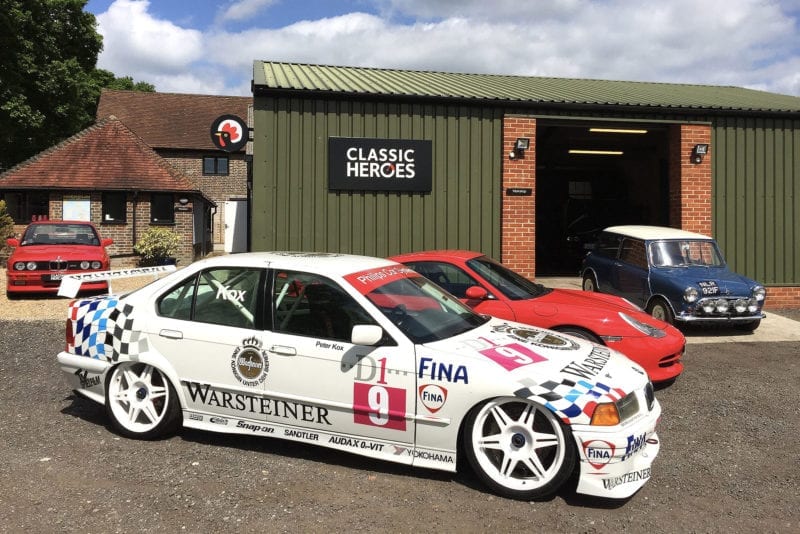Letters, March 2020
Your Speedshop article [A Blooming Lotus, January 2020] reminded me that during the ‘50s as a teenager in Bridgnorth, I and petrolhead friends spent our time working on our road cars or building ‘specials’ based on Austin 7s. A young student from Cirencester Agricultural College appeared, called John Whitmore. His road car was a Lotus 6 and he and I travelled many times to the Littleton Arms, Hagley, to attend meetings of Hagley and District Car Club. This always seemed to be in the winter and there was no windscreen, but John always seemed to find an old pair of goggles for me.
One bitter evening off we went with goggles in position. The whole evening was spent in great company and also thawing out from the journey. On the way out John said that we had to collect something, which turned out to be a Lotus windscreen and he placed it across the back of the car and asked me to put my arm over it to avoid it falling off. On the freezing 18-mile journey home, I quickly lost all feeling in my arm and lost interest as to whether the windscreen had fallen out. The only consolation was that while most people would have taken half an hour for the journey, John would take 15 minutes.
When John began racing we attended some events to support him, including a speed test around Marsh’s Farmyard at Kinver, which was frightening as then they used just a few scattered straw bales to protect the public from death or injury.
A great character, John also had the reputation of racing a highly tuned Austin A35 around Bridgnorth very late at night, inches from a friend’s identical car.
Malcolm Scott, Wolverhampton

Hard-hat chicken logo connects Essex Racing with Classic Heroes’ current Sussex base
I greatly enjoyed the article on the Project Astons in the February issue. Whilst I knew that John Ogier had fielded the Essex Racing Stable team, I hadn’t previously made the connection to his chicken-farming enterprise.

Run by the ever-ebullient Barney Halse, Classic Heroes gives a nod to John Ogier’s business in its logo of a chicken wearing a crash-helmet. One feels that Ogier would have approved.
Andrew Barrett, Brandon, Lincs.
The 2019 Matters of Moment was a great opportunity to look back and remember some great moments.
A missed moment that deserved a mention was the three-abreast pass that Callum Macleod pulled off through Eau Rouge to take second place in the British GT race – surely it ranks as one of the standout moments of 2019?
Anyone lucky enough to have made the run down toward Eau Rouge in any car knows how daunting it looks as you get closer and closer – to have cars both sides, knowing no one is going to blink… It’s a standout moment – no question!
Geoff Hanson, Leighterton, glos
It may be my age, 53, but I could not help nodding in agreement with Mr Thackwell [Racing Lives, February] when he spoke of vanity, self-obsession and lack of humility in motor sport. I notice these failings even more so in American football, where any successful play comes with chest-beating and gloating while looking for the nearest television camera. Old boys do think things were better back in the old days and in this area I’m afraid they (we) are correct.
Always enjoy your magazine, thanks for your efforts.
Jorge Alvear, Duluth, Georgia, USA
The photo of Mario Andretti at the rear wheel of his Lotus 78 [Chapman and the Wing Car, February] does not show him checking the wheel torque, but rather checking the corner weights on his car. Doug Nye refers to this on the same page in his article, together with Andretti’s practice of checking the tyre circumferences to pick a well-matched set (or not if you wanted to induce some bias). All practices he learnt racing on American oval, dirt tracks.
Andrew Beint, Chippenham, Wilts
I noted in Speedshop [January 2020] a disapproval of Lotus Elans fitted with Spyder chassis. I wish to plead the opposing case. Touting originality may be a tantalising prospect for the Lotus car buyer/seller, as it provides a case for downgrading a car’s value and a profitable opportunity for replacing a serviceable chassis with another.
Between the late 1970s and 1994, Spyder Engineering manufactured over 4000 chassis for the Elan, the Plus 2, and Europas, almost all of them of spaceframe construction. The original chassis in the Elan and Plus 2 were unfit for purpose: the front suspension bulkhead towers were exposed to the ingress of water and road debris. As a result, they rotted and fell off, often after a mere 10 years.
If ever there was a car that triggered ambivalence, it was the Elan. Though a joy to drive, it was a persistent nuisance to own. Once, while attempting to catch a Stranraer ferry, my own Elan Sprint severed a driveshaft coupling by the roadside as night fell. For those who drove them, originality presented major disillusionments, as Jim Clark’s candid notes to the factory testified.
Those Spyder chassis were premium products. Though more expensive than the original, they corrected inexcusable faults. They were also substantially stiffer. Proud of the work, I have always considered our contribution to the Lotus Elan as akin to Abarth’s endeavours with the Fiat 500 — a desirable upgrade.
Vic Moore (Spyder co-founder), Atlanta
Write to Motor Sport, 18-20 Rosemont Road, London, NW3 6NE or e-mail, [email protected]
